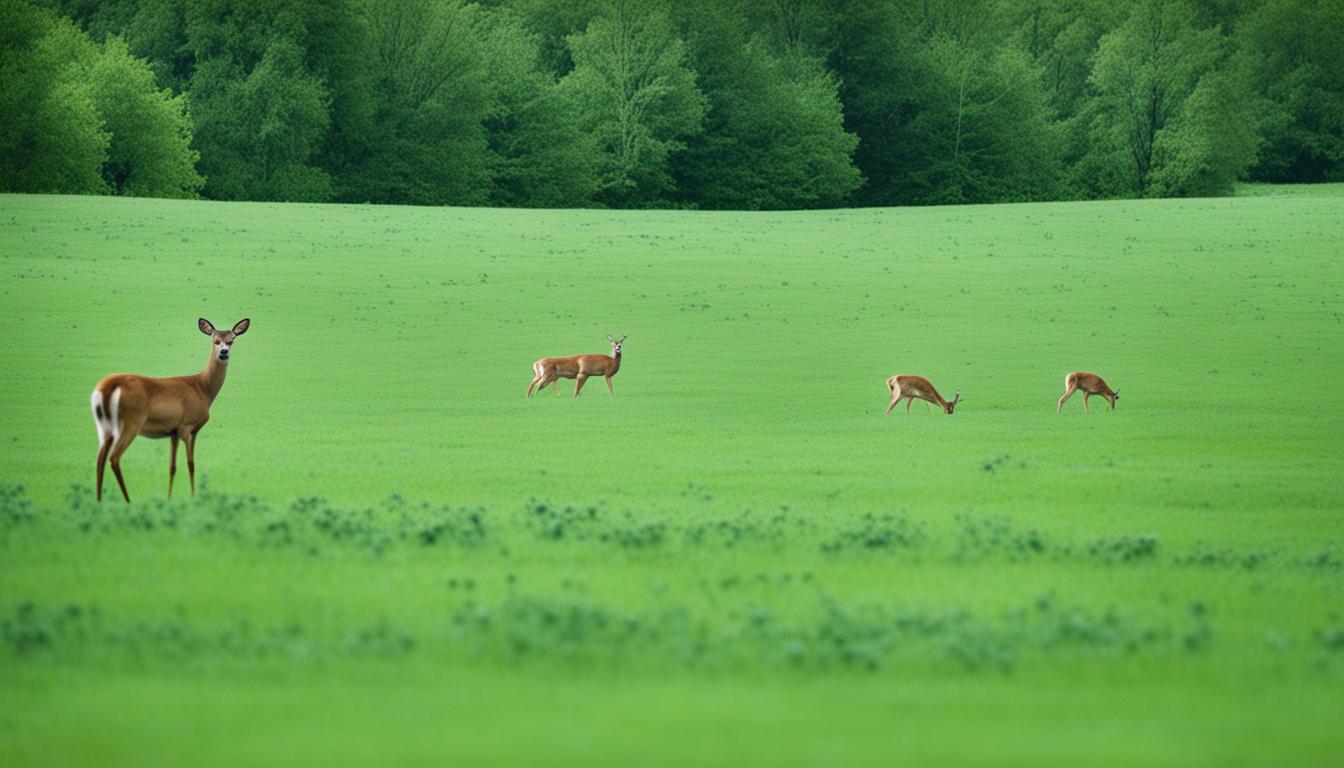Planting a food plot is a tried-and-true strategy for both hunters and landowners looking to attract and nourish deer on their property. However, successfully developing and planting a food plot requires more than just good intentions. It takes knowledge and planning to ensure that your efforts yield the desired results.
In this section, we’ll provide you with essential tips on selecting the right plot placement, preparing the seedbed, and tilling the soil for a successful deer food plot. Whether you’re a seasoned hunter or a first-time landowner, these expert insights will help you make the most of your efforts.
Content Highlights
ToggleKey Takeaways:
- Selecting the right plot placement is crucial for attracting deer to your food plot. Consider factors like soil quality, moisture levels, and tree cover.
- Preparing the seedbed involves clearing the plot of debris, killing competing plants, and ensuring the soil is in optimal condition for seeding.
- Conducting a soil test is essential to determine the fertility and pH levels of the soil, allowing you to make informed decisions about fertilizers and lime application.
- Choosing the best deer plot seeds involves considering factors like equipment availability, planting season, and desired goals for the plot.
- Once established, it’s important to properly manage your food plot by maintaining soil fertility, controlling weeds, and monitoring for potential pest issues.
Selecting Good Plot Placement and Preparing the Seedbed
The success of a food plot begins with good plot placement. Experts recommend distributing the plots throughout the property to provide food to a higher percentage of the deer population. In the eastern part of the US, plots should be from one to five acres in size, while in the west, plots are generally larger. Ideal plot locations have rich soil and good moisture, irregular tree lines, and no trees in the field.
Once the sites are selected, it is important to clean them up and prepare the seedbed by removing ground litter, killing competing plants, and tilling the soil to establish a good seedbed. Different equipment, such as ATVs or tractors, may be needed depending on the condition of the plot.

By selecting suitable plot locations and preparing the seedbed properly, you can create an ideal environment for deer to thrive and provide them with the necessary nutrition. The right plot placement and seedbed preparation are crucial aspects of effective food plot management and deer habitat improvement.
Soil Testing and Seed Selection
When it comes to food plot establishment and attracting deer with food plots, conducting a soil test is a crucial step. A soil test provides valuable information about the soil’s fertility and pH levels, which are essential for optimal plant growth. By understanding the soil’s composition, you can determine the type and amount of fertilizer and lime needed to create an ideal environment for your food plot.
Once the soil is properly prepared, the next step is to select the right seed for your food plot. Several factors should be considered during this process. First, evaluate the equipment available to you and choose seed varieties that align with your planting methods. Consider the planting season as well, ensuring that the seeds you select are suitable for the climate and weather conditions in your area. Additionally, define the goals of your food plot, whether it’s focused on harvest facilitation, wildlife viewing, or overall management improvement. Select seed species that not only offer high-quality food for deer but are also resilient and suitable for your specific goals and environmental conditions.
While establishing the food plot is important, proper management is key to its success. Regularly monitor and maintain the soil fertility of the plot, as this will directly impact the growth and quality of the plants. Implement weed control measures to ensure that the food plot remains free from unwanted competition, allowing the desired plants to flourish. Additionally, be vigilant in scouting for potential pest problems that could affect the health of the food plot. By actively managing your food plot, you can maximize its potential for attracting deer and providing them with a nutritious food source.
FAQ
What is a deer food plot?
A deer food plot is an area of land specifically planted to provide food for deer and other wildlife. It is designed to attract and nourish deer, making it an ideal location for hunting or wildlife observation.
What are some popular seeds for deer food plots?
Some popular seeds for deer food plots include clover, chicory, soybeans, corn, and brassicas. These seeds provide high-quality food and can help attract and sustain deer populations.
How do I select the right plot placement?
To select the right plot placement, look for areas with rich soil, good moisture, irregular tree lines, and no trees in the field. Ideally, distribute the food plots throughout the property to provide food to a higher percentage of the deer population.
How do I prepare the seedbed for a food plot?
To prepare the seedbed for a food plot, start by removing ground litter, killing competing plants, and tilling the soil. This process creates a suitable environment for seed germination and establishment.
Why is soil testing important for a food plot?
Soil testing is important for a food plot because it provides information on the soil’s fertility and pH levels. This information is crucial for selecting the right fertilizer and lime to promote healthy plant growth.
How do I select the right seed for my food plot?
To select the right seed for your food plot, consider factors such as the type of equipment available, the planting season, and the desired goals for the plot. Choose plant species that provide high-quality food and are suited to the specific weather conditions in your area.
How do I maintain a food plot?
To maintain a food plot, it is important to manage soil fertility, keep the plot weed-free, and scout for potential pest problems. Regular maintenance ensures a healthy and productive food plot for deer and other wildlife.
- California Deer Hunting Guide: Seasons, Rules, Permits, and More - 26 June 2024
- Arkansas Deer Season 2024 [Schedules, Licenses, Bag Limits & More!] - 26 June 2024
- 2024 Arizona Deer Season New Dates & Rules! - 25 June 2024


